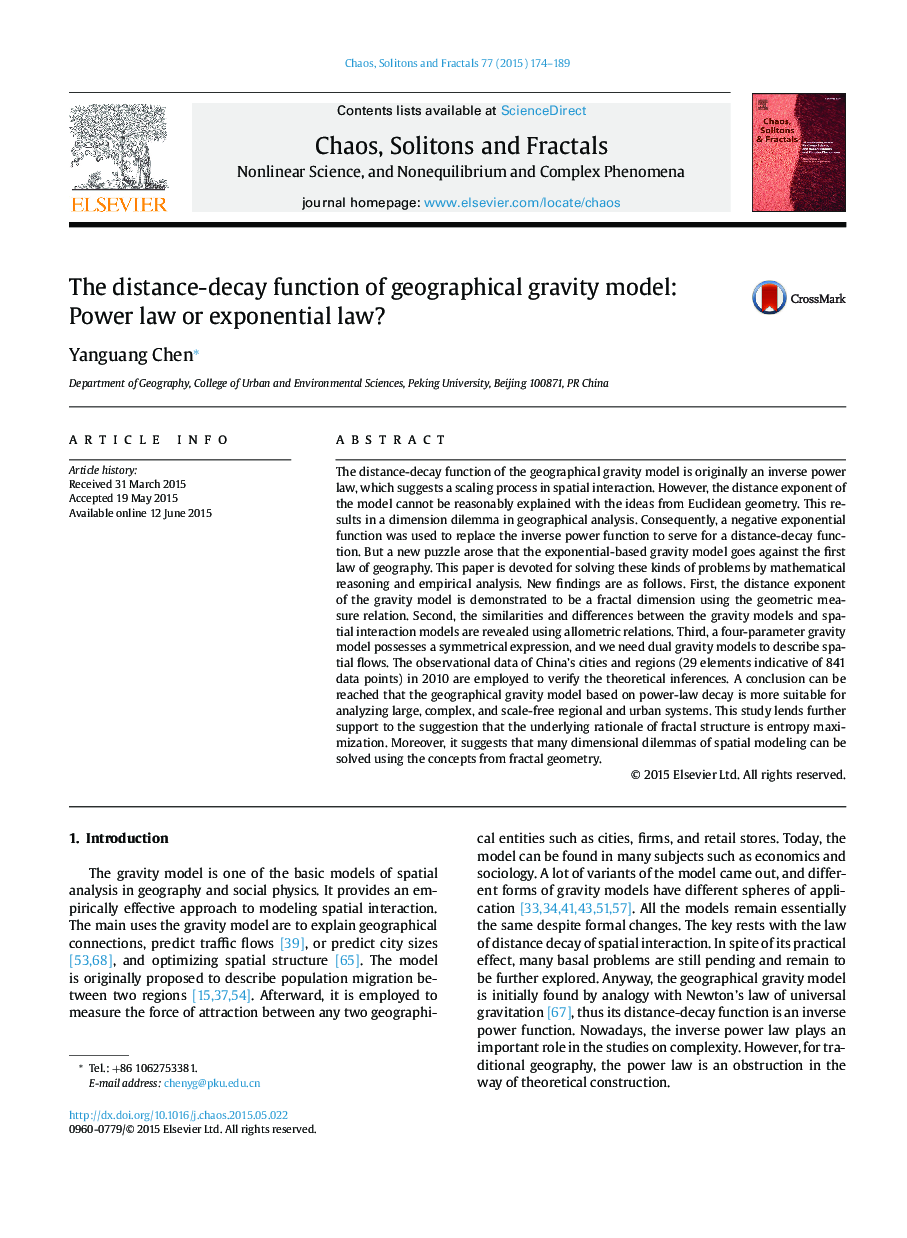| Article ID | Journal | Published Year | Pages | File Type |
|---|---|---|---|---|
| 8254846 | Chaos, Solitons & Fractals | 2015 | 16 Pages |
Abstract
The distance-decay function of the geographical gravity model is originally an inverse power law, which suggests a scaling process in spatial interaction. However, the distance exponent of the model cannot be reasonably explained with the ideas from Euclidean geometry. This results in a dimension dilemma in geographical analysis. Consequently, a negative exponential function was used to replace the inverse power function to serve for a distance-decay function. But a new puzzle arose that the exponential-based gravity model goes against the first law of geography. This paper is devoted for solving these kinds of problems by mathematical reasoning and empirical analysis. New findings are as follows. First, the distance exponent of the gravity model is demonstrated to be a fractal dimension using the geometric measure relation. Second, the similarities and differences between the gravity models and spatial interaction models are revealed using allometric relations. Third, a four-parameter gravity model possesses a symmetrical expression, and we need dual gravity models to describe spatial flows. The observational data of China's cities and regions (29 elements indicative of 841 data points) in 2010 are employed to verify the theoretical inferences. A conclusion can be reached that the geographical gravity model based on power-law decay is more suitable for analyzing large, complex, and scale-free regional and urban systems. This study lends further support to the suggestion that the underlying rationale of fractal structure is entropy maximization. Moreover, it suggests that many dimensional dilemmas of spatial modeling can be solved using the concepts from fractal geometry.
Related Topics
Physical Sciences and Engineering
Physics and Astronomy
Statistical and Nonlinear Physics
Authors
Yanguang Chen,
